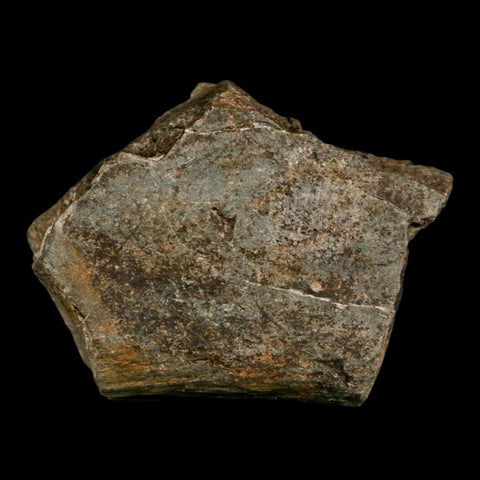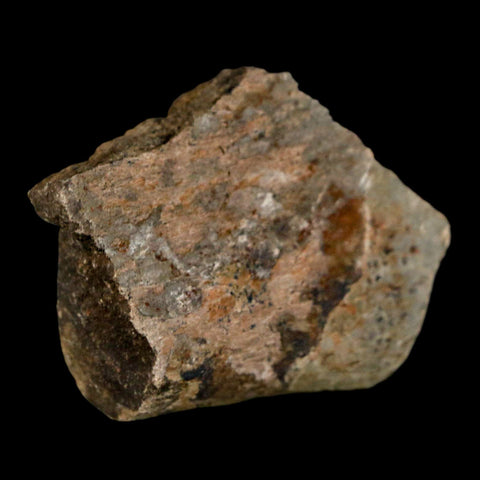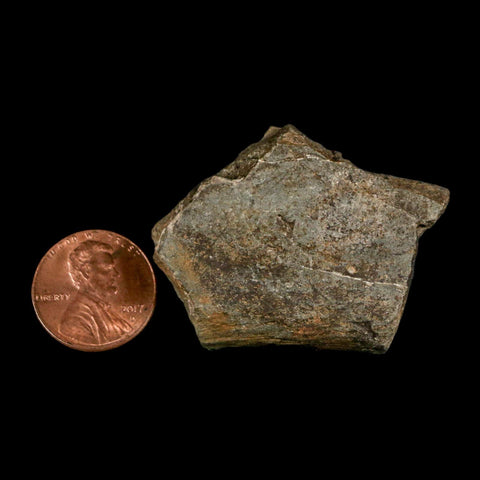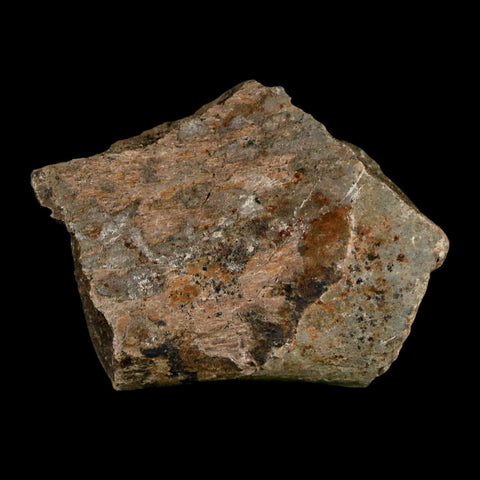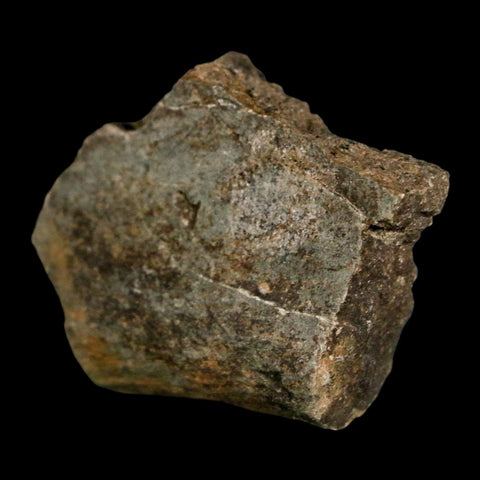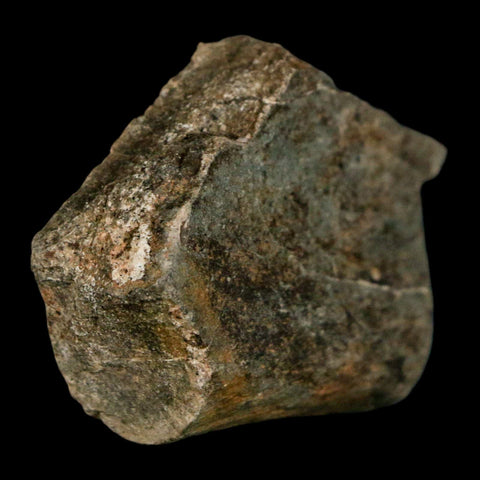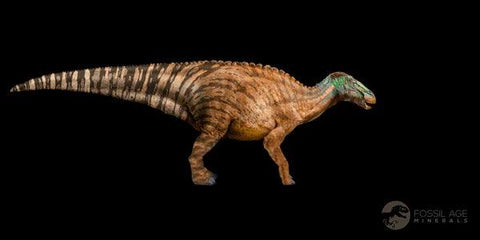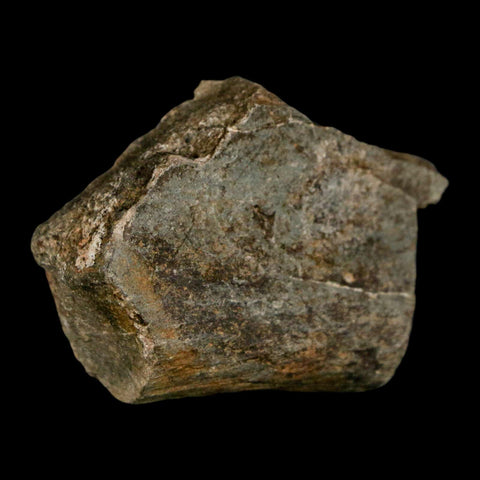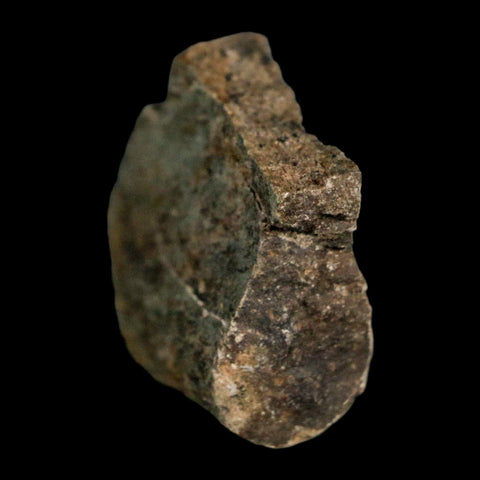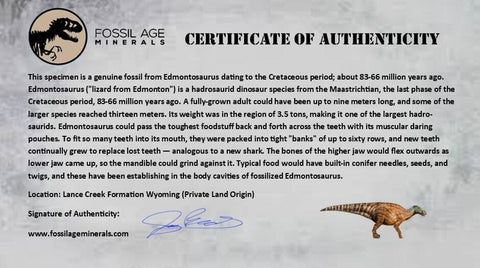1.7" Edmontosaurus Fossil Rib Bone Lance Creek FM Cretaceous Dinosaur WY COA
Location: Lance Creek Formation, Wyoming (Private Land Origin)
Weight: 0.9 Ounces
Fossil Dimensions: 1.7 Inches Long, 1.4 Inches Wide, 0.6 Inches Thick
Comes with a Certificate of Authenticity.
The item pictured is the one you will receive.
Edmontosaurus, meaning “lizard from Edmonton,” was a large hadrosaurid dinosaur that thrived during the Maastrichtian stage of the Late Cretaceous, roughly 71–65 million years ago in North America. Adult individuals typically measured around nine meters long, with some specimens reaching thirteen meters, and weighed approximately 3.5 tonnes, making Edmontosaurus one of the most massive and successful herbivorous dinosaurs of its era.
This duck-billed dinosaur had a sophisticated feeding system. Its jaws contained up to sixty rows of teeth, constantly replaced to maintain efficient chewing. Muscular cheek pouches moved plant material across the dental battery, allowing it to process tough vegetation, including twigs, seeds, and conifer needles. The flexible jaw bones enabled a grinding motion that maximized feeding efficiency, supporting both ground-level browsing and low vegetation consumption. Fossil evidence confirms this diet, including preserved plant matter in body cavities.
Fossils discovered in Wyoming in 1908 revealed impressions of scaly, leathery skin and small tubercles along the neck, back, and tail, emphasizing its unique duck-like appearance. Edmontosaurus was primarily bipedal but could also move on all fours, using forelimbs adapted with hooves and pads for weight-bearing. Its hind limbs were muscular and strong, while a downward-sloping spine allowed a low feeding posture.
Although it lacked natural armor or claws for defense, Edmontosaurus relied on sharp eyesight, acute hearing, and a keen sense of smell to detect predators like large theropods. Its combination of size, feeding adaptations, and mobility illustrates the ecological success of hadrosaurid dinosaurs in Late Cretaceous North American ecosystems.
Studying Edmontosaurus provides insight into the anatomy, behavior, and ecological role of duck-billed dinosaurs, showcasing their specialized adaptations as highly efficient herbivorous dinosaurs and highlighting their importance in prehistoric plant-eating communities.



